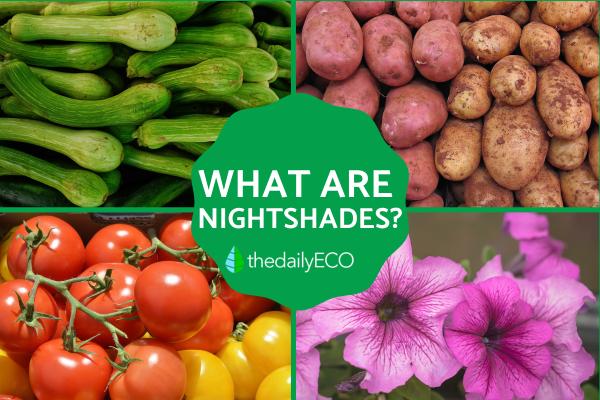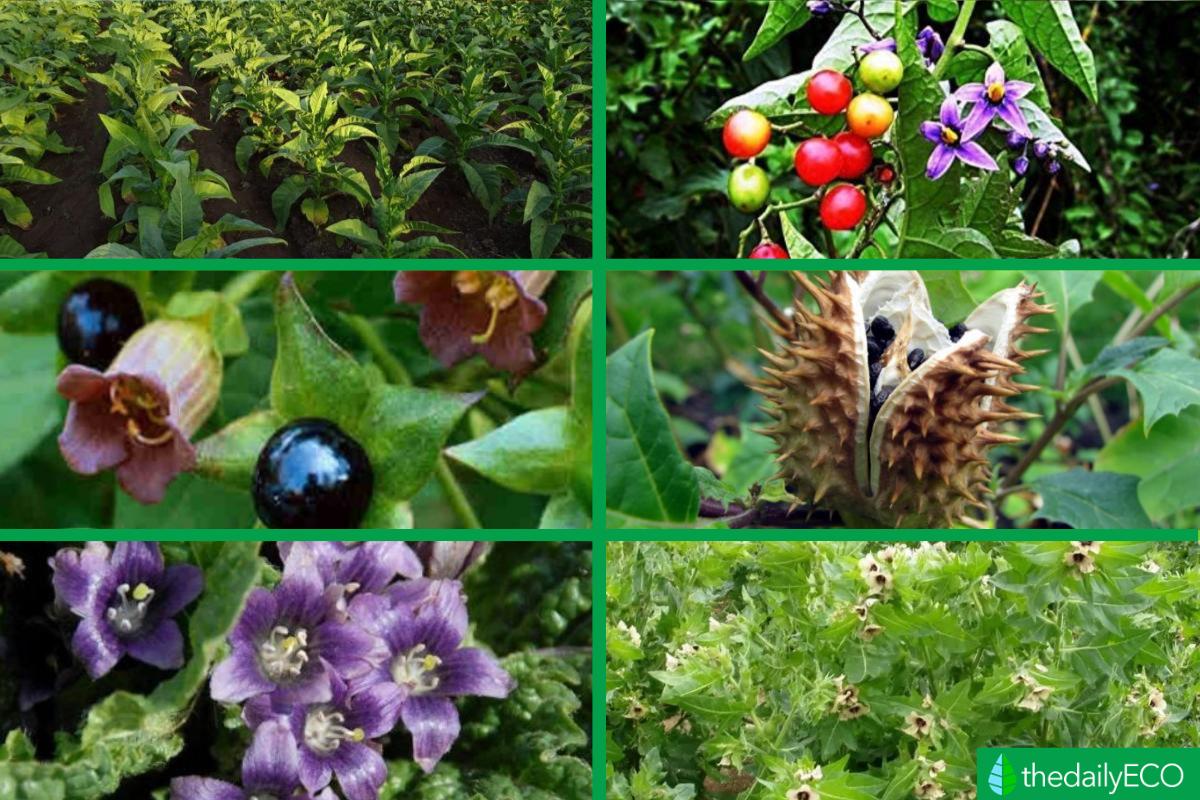What Are Nightshades?


The Solanaceae family, also known as the nightshade family (Solanaceae Juss.) is a family of herbaceous or woody plants that includes about 98 genera and about 2700 species, most of which are poisonous, such as deadly nightshade, which can even cause death. Only a few are edible, including potatoes, eggplants, tomatoes, peppers, chili peppers and even goji berries.
The following thedailyECO article explains what nightshade plants are, what their main characteristics are, and some examples.
What are nightshades?
Solanaceae, also known as nightshade or potato, are an angiosperm family. Generally, they are either herbaceous or shrubby. They are divided into about 98 genera and more than 2,700 different species of this particular family have been discovered. The origin of the name "nightshade" is not clear, but some suggest that the name describes that these plants prefer to grow and flower at night and in the shade.
In addition, Solanaceae are widely distributed, both in tropical and warm regions and in temperate and cold regions. However, most of them are native to the Americas and some others to Eurasia, Africa, and Australia.
The origin of the name "nightshade" is not clear, but some suggest that the name describes how these plants prefer to grow and flower at night and in the shade.
These plants can be annuals, biennials, or perennials due to their wide diversity. Another common characteristic is that they usually have underground tubers.
The toxicity of these plants is attributed to the presence of certain alkaloids, mainly solanine, but others such as capsaicin, scopolamine, atropine, hyoscyamine and nicotine are also present. These compounds act as a kind of pesticide that protects the plant from pests and predators, whose consumption can cause inflammation, muscle spasms and pain. These glycoalkaloids are more abundant in the green parts of the vegetable. Therefore, it is always best to avoid these parts and, on the other hand, collect the vegetables when they are ripe and store them in dark and cool places.
Many of these species are of economic interest, either as industrial plants (tobacco, Nicotiana tabacum), as medicinal plants (belladonna, Atropa belladonna), as ornamental plants (Petunia, Petunia hybrida), and especially as horticultural crops.
Solanaceous plants are the staple food of many cultures due to their nutritional richness. The family has great economic importance with edible species such as potato (Solanum tuberosum), tomato (Solanum lycopersicum), tree tomato (Solanum betaceum), naranjilla (Solanum quitoense), cucumber (Solanum muricatum) and others.
Also, many herbs and spices are derived from nightshade plants, including cayenne pepper, crushed red pepper, chili powder, and paprika. Finally, several condiments contain nightshade vegetables, including hot sauce, ketchup, marinara sauce, salsa, and baba ganoush (eggplant dip).

Are nightshades bad for your health?
Some alkaloids have beneficial effects on human health, while others can be harmful, such as the chemicals found in tobacco, a nightshade crop.
The alkaloid found in nightshade plants is solanine. It acts as an insecticide while the plant is growing. If you ingest too much solanine, you may feel bad. When potatoes turn green, they contain more alkaloids and taste more bitter. You may get nausea, diarrhea, headache, and fever when eating green potatoes.
Characteristics of nightshades
In spite of its variety, the nightshade family is characterized by the following features:
- The leaves of most nightshade plants are simple and alternate on the stem. They are also usually lobed and in many cases have spines.
- Solanaceae are hermaphroditic plants that have both actinomorphic and zygomorphic flowers, often arranged singly and, in some special species, in inflorescences, both axillary and terminal. The shape of these flowers is often bell-shaped.
- The fruits are frequently berries or drupes.
- The seeds are dicotyledonous and have a straight or curved embryo. They are also polyploid in most species of this family.
- Their chemical composition contains alkaloids such as atropine, hyoscyamine, or nicotine, which are found in many toxic species of the Solanaceae family.
- Solanaceae also contain other substances, such as capsaicin, an oleoresin that often causes a mild irritant effect and a pungent taste, as in chili.
- Finally, they contain solanine. This bitter-tasting, toxic glycoalkaloid occurs naturally in the leaves, fruits, and tubers of some edible nightshade plants.
If you want to learn further about plants, do not miss the following article, where we discuss what cryptogamous plants are and give you examples of different cryptogamous organisms found in nature.
Examples of nightshades
To end the discussion of this type of plant, let us leave here some examples of nightshade plants:
List of edible nightshade plants
- Tomato (Solanum licopersicum)
- Eggplant (Solanum melongena)
- Tabasco pepper (Capsicum frutescens)
- Sweet and chili pepper (Capsicum annuum)
- Potato (Solanum tuberosum)
- Matrimony vine (Lycium barbarum)
List of poisonous nightshade plants
- Tobacco (Nicotiana tabacum)
- Bittersweet (Solanum dulcamara)
- Belladonna (Atropa belladonna)
- Jimsonweed (Datura stramonium)
- Mandrake (Mandragora autumnalis)
- Henbane (Hyoscyamus niger)
Other plants from the nightshade family
- Yellow Angel's Trumpet (Brugmansia x candida)
- Blue potato bush (Lycianthes rantonnetii)
- Tree tobacco (Nicotiana glauca)
- Earleaf nightshade (Solanum mauritianum)
- Garden petunia (Petunia × atkinsiana)
- Angular winter cherry (Physalis angulata)
The following are pictures of nightshade plants in order of appearance.
If you want to learn further about plants, you should not miss the following article, where we talk about what are ornamental plants and which species are the most popular for indoor and outdoor use.



If you want to read similar articles to What Are Nightshades?, we recommend you visit our Biology category.









